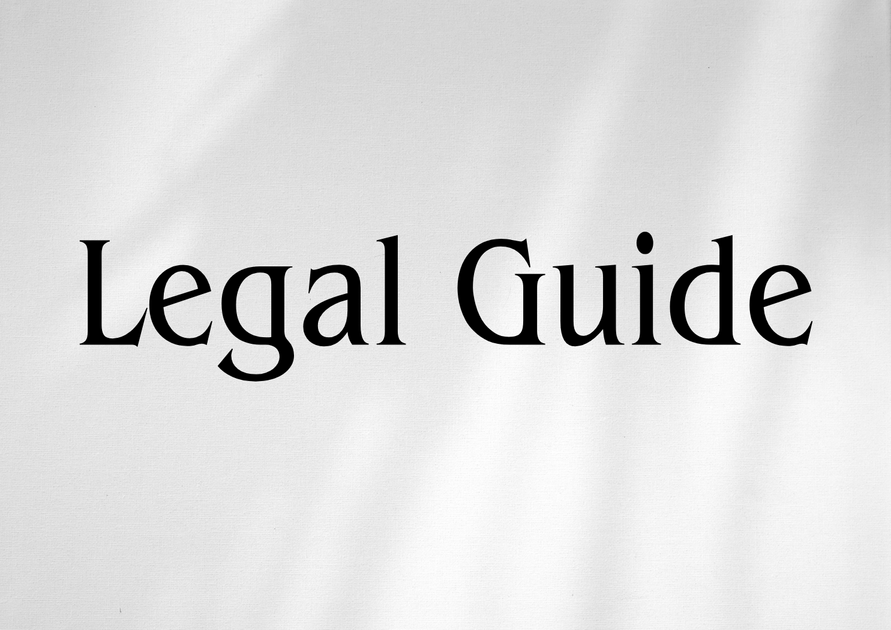Introduction: Navigating Private Jet and Charter Licensing in Saudi Arabia – Why UAE Stakeholders Need to Know
The rise of private air travel across the Gulf Cooperation Council (GCC), especially in Saudi Arabia, is reshaping the region’s aviation landscape. This sector represents a new frontier for business executives, high-net-worth individuals, and organizations managing cross-border operations between the UAE and Saudi Arabia. As regulators in the Kingdom of Saudi Arabia (KSA) introduce substantial updates to the licensing framework for private jet and charter operators, UAE-based legal practitioners, HR managers, and C-suite executives must understand the profound regulatory implications. Given the UAE’s strategic role as a commercial and aviation hub, the ability to navigate these changes can spell the difference between seamless operations and costly compliance hiccups.
This article provides in-depth legal analysis, practical guidance, and compliance recommendations regarding the evolving licensing regime for private jet and charter operations in Saudi Arabia. It addresses the importance of these updates for UAE businesses and legal professionals in light of 2025 regulatory trends, the broader regional push for heightened aviation safety, and the economic drive to streamline business and tourism travel. All guidance is based on the latest official sources, including directives from the Saudi General Authority of Civil Aviation (GACA), with comparative analysis to UAE regulatory frameworks.
Table of Contents
- Legal and Regulatory Framework Governing Private Jet and Charter Operations
- Licensing Process and Requirements: A Step-by-Step Breakdown
- Key Compliance Issues and Recent Legal Updates
- Comparative Analysis: Saudi vs. UAE Licensing Regimes
- Risks of Non-Compliance and Penalties
- Practical Consultancy Insights for UAE Operators and Stakeholders
- Case Studies and Scenario Analysis
- Best Practices for Legal Compliance and Mitigation Strategies
- Conclusion: The Road Ahead for Private Air Charter in the Gulf
Legal and Regulatory Framework Governing Private Jet and Charter Operations
Saudi General Authority of Civil Aviation (GACA) – The Central Regulator
Regulation of private jet and charter operations in Saudi Arabia is governed primarily by the Saudi General Authority of Civil Aviation (GACA). GACA’s statutory mandate covers the entire spectrum of commercial and non-commercial flight activities, including business jets, air taxis, VIP charters, and air ambulance services. The core legal instruments are:
- GACA Aviation Safety Regulations (GACARs), especially GACAR Part 119 and Part 135.
- Executive Regulations for Civil Aviation (2021, updated 2023).
- Royal Decree No. M/44 on Civil Aviation and Access, issued under the auspices of the Saudi Civil Aviation Law.
- Ministerial Resolutions on Economic Regulation of Non-Commercial Air Operators.
Key Saudi Regulations Relevant to Private Jet and Charter Licences
GACAR Part 119 establishes certification requirements for air carriers and commercial operators, setting forth the procedural pathways for obtaining an Air Operator Certificate (AOC) or equivalent permission. GACAR Part 135 specifies operational standards for non-scheduled (charter) flights, private jet services, and VIP air taxis—decreeing provisions on crew qualifications, maintenance scheduling, operational control, safety management systems, and passenger security.
Alongside these, the Saudi Civil Aviation Law (amended in 2022 by Royal Decree M/44) allows GACA to impose additional economic and safety requirements, mirroring international standards of the International Civil Aviation Organization (ICAO) and aligning (with local adaptation) to the frameworks implemented in the UAE under the General Civil Aviation Authority (GCAA).
The Cross-Border Dimension: Why This Matters for UAE Stakeholders
Even though these laws are Saudi in origin, their effect is regional. UAE-based businesses, aviation consultancies, and legal practitioners are increasingly involved in structuring, financing, or operating GCC-wide private aviation solutions. Understanding Saudi regulatory frameworks is essential for:
- UAE aviation companies seeking entry to the Saudi market
- Multinational clients chartering aircraft for cross-border missions
- Legal advisors guiding compliance strategies for shared GCC airspace
- UAE operators seeking reciprocal or code-share style arrangements across both jurisdictions
Licensing Process and Requirements: A Step-by-Step Breakdown
1. Eligibility and Initial Application
As set out in GACAR 119 and Ministerial Regulatory Circular 2024/02, private jet and charter operator licensing in Saudi Arabia proceeds through a two-stage process:
- Pre-Application Determination: An applicant must confirm eligibility, which includes corporate structure requirements (usually a Saudi-registered entity, or a foreign company with compliant local partnership), financial sufficiency, and documented safety management systems.
- Formal License Application: Submission of an exhaustive package including detailed business plans, technical capability statements, fleet and maintenance documentation, insurance proof (reflecting compliance with EU Regulation EC 785/2004 as incorporated by GACA), and risk assessment protocols.
2. Regulatory Review and Approval
- GACA conducts a comprehensive economic, safety, and security audit.
- Operational readiness demonstration, including simulated command exercises and compliance with GACAR 135 requirements on crew training and operational manuals.
- Environmental and noise pollution assessments, as Saudi Arabia has recently introduced (2023) stricter requirements on noise certification, particularly for VIP jets operating into designated city airports.
3. Granting and Renewal of Operator Licence
If successful, GACA issues an Air Operator Certificate (AOC), valid for up to three years, subject to annual surveillance audits and spot checks. Operators are required to demonstrate ongoing compliance via documented evidence and may be required to submit to unannounced inspection at any time.
Table: Visual Representation of the Licensing Process
| Stage | Key Requirements | Regulatory Reference | Typical Timeline |
|---|---|---|---|
| Pre-Application | Corporate eligibility, financial assessment | GACAR 119.11 | 2-4 weeks |
| Licence Application | Full documentation, safety management system | GACAR 119.33 | 4-8 weeks |
| Regulatory Review | Audit (safety, environment, security) | GACAR 119.65, Ministerial Circular 2024/02 | 2-8 weeks (depending on compliance) |
| AOC Issuance | Operational demonstration, fee payment | GACAR 119.101 | 1-2 weeks |
| Renewal/Surveillance | Ongoing compliance, inspections | GACAR 135 | Continuous |
Visuals Suggestion: Process flowchart for licensing steps, helping clients visualise key milestones and document requirements for Saudi AOC applicants.
Key Compliance Issues and Recent Legal Updates
Major 2023–2025 Regulatory Changes Affecting Private Jet Operations
- Stricter Noise Pollution and Environmental Controls: Under Circular No. 222-2023, all jets must now furnish recent (not older than 12 months) noise certification and emissions data.
- Enhanced Economic Substance and Local Partnership Rules: As of May 2024, foreign operators must demonstrate substantive economic activity in KSA—e.g., local management, facilities, and Saudi partner shareholding of at least 25% in most cases.
- Anti-Money Laundering (AML) and Passenger Manifest Rules: In line with recent G20 recommendations, Saudi GACA has implemented advanced passenger information system (APIS) submission mandates and vetting against anti-terrorism and financial crime blacklists.
- Insurance and Financial Guarantee Upgrades: Minimum hull and third-party liability insurance limits now mirror or exceed those under EU Regulation EC 785/2004.
For UAE businesses and legal advisors, these changes mean stricter due diligence, more elaborate documentation, and an increased compliance burden when seeking to enter the Saudi market.
Table: Summary of Recent Regulatory Changes (2021–2025)
| Provision | Pre-2021 | 2021–2025 |
|---|---|---|
| Foreign Ownership Rule | Up to 49% permitted, minimal economic substance | Max 75% for foreign, minimum 25% Saudi shareholding; economic substance required |
| Insurance Requirements | GACA Schedule, lower than EU level | Matching or exceeding EC 785/2004 limits; increased scrutiny of insurers |
| Noise/Environmental Certification | Required for certain city airports only | Mandatory for all private jets and charters, stricter criteria |
| APIS and AML Compliance | Limited requirements, post-arrival data | Real-time APIS, cross-checking with global watchlists, pre-departure vetting |
Visuals Suggestion: A compliance checklist table or infographic summarising 2025 licensing checkpoints and action items for applicants.
Comparative Analysis: Saudi vs. UAE Licensing Regimes
Key Similarities and Differences
Both Saudi Arabia and the UAE regulate private jet and air charter operations through independent aviation authorities (GACA and GCAA, respectively). Despite shared adherence to ICAO standards, there are significant differences in application, process, and compliance expectations.
| Aspect | Saudi Arabia (GACA) | UAE (GCAA) |
|---|---|---|
| Regulator | GACA | GCAA |
| Legal Basis | Saudi Civil Aviation Law, GACAR 119/135 | Federal Law No. 20 of 1991, CAR PART IX |
| Ownership Structures | Min. 25% Saudi; foreign up to 75% | Depending on licence class, min. 51% UAE nationals required |
| Application Procedure | Document-heavy, 2-stage process; economic substance key | Simpler for Dubai/Abu Dhabi-based operators; direct online submission, less emphasis on local partnership |
| Recent Legal Focus | Noise/Environmental, AML, local economic substance | Security screening, operational safety, new e-services |
| Penalties for Breach | Severe, potential criminal sanctions, aircraft impoundment | Fines, operator licence suspension/revocation, blacklisting |
Visual Suggestion: A side-by-side infographic comparing licensing process steps and requirements for quick reference by foreign applicants and UAE legal consultancies.
Opportunities for UAE Operators
For UAE aviation service providers, knowledge of both regimes enables:
- Structured joint ventures with Saudi partners
- Cross-utilisation of fleets and reciprocal access
- Regional growth, especially surrounding giga-projects and tourism events in both countries
- Strategic positioning as ‘compliance navigators’ for multinational clients
Risks of Non-Compliance and Penalties
Sanctions for Licensing Breaches – What’s at Stake?
Saudi GACA’s enforcement regime under Article 114 of the Civil Aviation Law and Ministerial Resolution 56/2023 subjects operators to severe penalties for regulatory breaches. These include:
- License Revocation: Immediate suspension or permanent cancellation of AOC, with a resulting aircraft ground stop.
- Heavy Financial Fines: Fines ranging from SAR 250,000 to over SAR 2 million for serious violations (e.g., unlicensed flights, passenger manifest falsification).
- Aircraft Impoundment: Immediate seizure and grounding of aircraft pending regulatory or judicial proceedings.
- Criminal Liability: For deliberate breaches, key directors and responsible staff may face criminal prosecution under AML, customs, or safety offences statutes.
Table: Penalty Comparison – Saudi vs. UAE Sanctions
| Type of Breach | Saudi Penalty (GACA) | UAE Penalty (GCAA) |
|---|---|---|
| Flying Without Valid AOC | License revocation, SAR 2M+ fine, potential blacklisting | Immediate grounding, AED 500K-1M fine, blacklisting |
| Noise/Environmental Non-Compliance | SAR 500K fine, flight restrictions | AED 200K+ fine, airport access limits |
| APIS/Manifest Violations | Severe criminal liability, SAR 1M+ fines | Administrative fine, AED 250K-500K |
Risk Mitigation: Essential Steps
- Legal review of local partnerships, corporate structures, and control rights at project inception.
- Embed environmental, safety, and AML compliance teams within operational units.
- Engage GACA-accredited local compliance officers and legal representatives on retainer.
- Prepare for annual audits and maintain meticulous documentation for all aircraft and crew.
Practical Consultancy Insights for UAE Operators and Stakeholders
Counsel for Entry: Structuring the Saudi Business Presence
1. Entity Formation: Before applying for a Saudi AOC, foreign and UAE-based operators should assess available corporate structures:
- Direct Saudi incorporated entity (preferred for full-service charter, eligible for local incentives)
- Joint ventures or strategic alliances with established Saudi firms (compliant with ownership and control rules)
- Representative offices (for market assessment, not eligible for full licensing)
Legal and operational decisions must reflect the local substance, economic, and partnership mandates that have emerged post-2023.
2. Internal Compliance Management and Due Diligence
- Pre-qualify all pilots, crew, and maintenance staff through background checks, medical certification, and ongoing compliance monitoring.
- Implement digital data room solutions for the secure maintenance of licensing documentation, maintenance logs, and audit reports.
- Regular training on GACA and GCAA standards for legal, HR, and compliance teams to ensure best-in-class operational compliance.
3. Client Advisory: Preparing for Cross-Border Operations
For law firms and aviation consultancies supporting high-net-worth households or corporate jet owners:
- Advise on permanent establishment risk and cross-border VAT implications for aircraft based or operating routinely in both jurisdictions.
- Continuous monitoring of bilateral aviation treaties between UAE and Saudi Arabia for any evolution in reciprocal access arrangements or regulatory harmonisation (2025 updates expected).
Case Studies and Scenario Analysis
Case Study 1: UAE Operator Entering the Saudi Market
Scenario: An Abu Dhabi-based charter company seeks to establish a subsidiary in Riyadh for direct operations under its own brand.
Issues Encountered:
- Failure to meet new local partnership threshold (only 15% Saudi partner; minimum required is 25%)
- Delayed APIS system integration
- Legacy aircraft failed the updated environmental certification
Consultancy Resolution:
- Re-structured Saudi entity, including a local partner with a 30% share
- Contracted a Saudi data processing company with GACA approval for APIS compliance
- Retrofitted aircraft with upgraded noise reduction systems and re-submitted for approval
- Result: AOC granted within 12 weeks and seamless entry into the Saudi market
Case Study 2: Cross-Border Charter Dispute
A Dubai-based executive chartered a Saudi-registered jet for a UAE–KSA round trip that was delayed due to failure to file APIS manifest in advance. The aircraft was grounded for 48 hours at Riyadh Airport.
Key Takeaways:
- Real-time APIS and passenger vetting are now mandatory before departure in both jurisdictions
- Failure to coordinate manifests can cause operational and legal delays impacting business critical timelines
- Legal advisors must pre-audit the charter provider’s compliance protocols as a condition precedent in contracts
Best Practices for Legal Compliance and Mitigation Strategies
- Early Legal Consultation: Engage local Saudi and cross-border counsel from inception to avoid structural, partnership, and documentation pitfalls.
- Continuous Regulatory Monitoring: Maintain subscriptions to GACA regulatory updates and the Saudi legal gazette—expect further changes as Vision 2030 progresses.
- Digital Compliance Solutions: Leverage automated compliance management systems for APIS, AML, and documentation archiving, with dashboards for audit readiness.
- Board-Level Awareness: Regular briefings for directors and executive management on liability risks, insurance adequacy, and cross-jurisdictional exposure.
- Scenario Testing: Conduct periodic drills on regulatory audits, safety inspections, and simulated breach events to stress test readiness.
Visuals Suggestion: Infographic-style compliance scorecard or boardroom briefing cheat-sheet for executive audiences.
Conclusion: The Road Ahead for Private Air Charter in the Gulf
The 2023–2025 regulatory wave around private jet and charter licensing in Saudi Arabia signals a new era of operational discipline, transparency, and cross-border due diligence for UAE-based and international stakeholders. With escalating compliance requirements spanning local partnership, environmental performance, AML screening, and digital passenger vetting, legal departments and management teams must adapt rapidly, leveraging expert legal advice and robust compliance systems. Proactive management of these requirements—through a blend of in-house diligence, external legal consultation, and investment in digital compliance tools—will enable organizations to not only mitigate risk but also gain competitive first-mover advantage as the GCC’s private aviation sector soars.
In summary, organizations serious about maintaining a resilient and compliant footprint across UAE and Saudi Arabia must prioritise early legal engagement, invest in cross-jurisdictional compliance training, and maintain an active presence within regulatory dialogues. Those who adapt swiftly position themselves to unlock a premium market that serves the region’s growing demand for flexible, secure, and legally assured private air travel.




